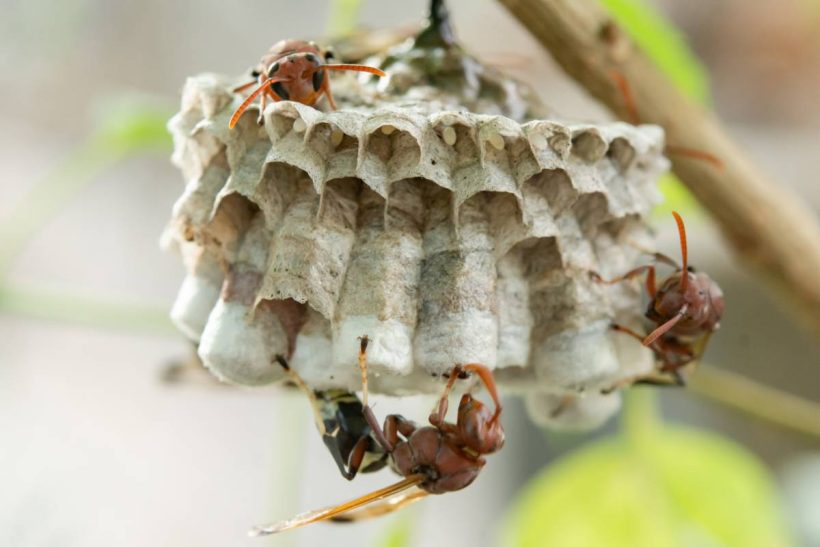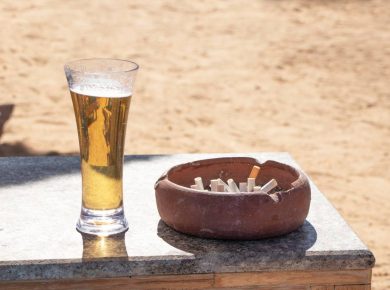Finding a wasp nest near your home can be alarming, especially if you or your family members are allergic to wasp stings. Wasps can become aggressive when their nests are disturbed, making it essential to approach their removal with caution.
This guide will cover how to identify wasp nests, the best methods to remove them safely, and preventive measures to keep wasps from returning.
Identifying a Wasp Nest
Before removing a wasp nest, it’s crucial to identify the type of wasps and their nest location. Common signs of a wasp infestation include:
- Increased wasp activity around your house, particularly near eaves, trees, or sheds.
- Visible nests in sheltered areas such as attics, roof overhangs, wall cavities, or bushes.
- Buzzing sounds coming from crevices or hidden areas.
Types of Wasp Nests
- Paper wasp nests: These are open and umbrella-shaped, often found under eaves or in tree branches.
- Hornet nests: Large, football-shaped nests made of a paper-like material, usually found in trees or high places.
- Yellowjacket nests: Often hidden underground, in wall voids, or dense vegetation.
How to Remove a Wasp Nest Safely
1. Wear Protective Gear
When dealing with wasps, always wear protective clothing, including:
- A long-sleeved shirt and pants
- Gloves
- A face mask or bee veil
- Closed-toe shoes
2. Choose the Right Time
Wasps are less active at night or early in the morning. Plan to remove the nest during these hours to minimize the risk of getting stung.
3. Use Wasp Spray
Wasp spray is an effective way to kill wasps instantly. Follow these steps:
- Stand a safe distance away (6-10 feet).
- Spray directly at the nest entrance.
- Wait a few hours before approaching the nest again.
- Repeat if necessary until all wasps are eliminated.
4. Apply a Natural Solution
If you prefer a chemical-free approach, consider these natural methods:
- Soap and water: Mix dish soap with water in a spray bottle and spray directly onto the nest. The soap clogs their breathing holes, killing them quickly.
- Peppermint oil spray: Mix water with a few drops of peppermint oil and spray the nest.
- Boiling water: Pour boiling water on underground nests, but use caution to avoid burns.
5. Remove the Nest
Once all the wasps are dead, carefully remove the nest using a plastic bag. Seal the bag and dispose of it in a sealed trash can away from your house.
Preventing Future Wasp Infestations
1. Seal Entry Points
Inspect your home for cracks, holes, or open vents where wasps could enter. Seal these gaps with caulk or mesh screens.
2. Keep Food and Garbage Covered
Wasps are attracted to food, especially sugary substances and protein sources. Secure trash cans with tight lids and clean up food spills promptly.
3. Use Wasp Traps
Commercial or DIY wasp traps can help reduce their population. To make a homemade trap:
- Cut a plastic bottle in half.
- Invert the top half into the bottom, creating a funnel.
- Fill with sugary bait (juice or soda) mixed with dish soap.
- Place the trap near problem areas.
4. Plant Wasp-Repelling Plants
Certain plants naturally deter wasps, such as:
- Peppermint
- Eucalyptus
- Wormwood
- Marigolds
5. Regularly Inspect Your Property
Frequent inspections help detect nests early before they grow large and become a bigger problem.
When to Call a Professional
If the nest is large, difficult to access, or located inside your home’s structure, it’s best to call a professional pest control service. Experts have the right equipment and experience to handle wasp nests safely.
Final Thoughts
Getting rid of a wasp nest near your house requires patience, preparation, and safety measures. By using the right removal techniques and taking preventive steps, you can keep your home wasp-free and safe for your family. If in doubt, always seek professional assistance to avoid unnecessary risks.










